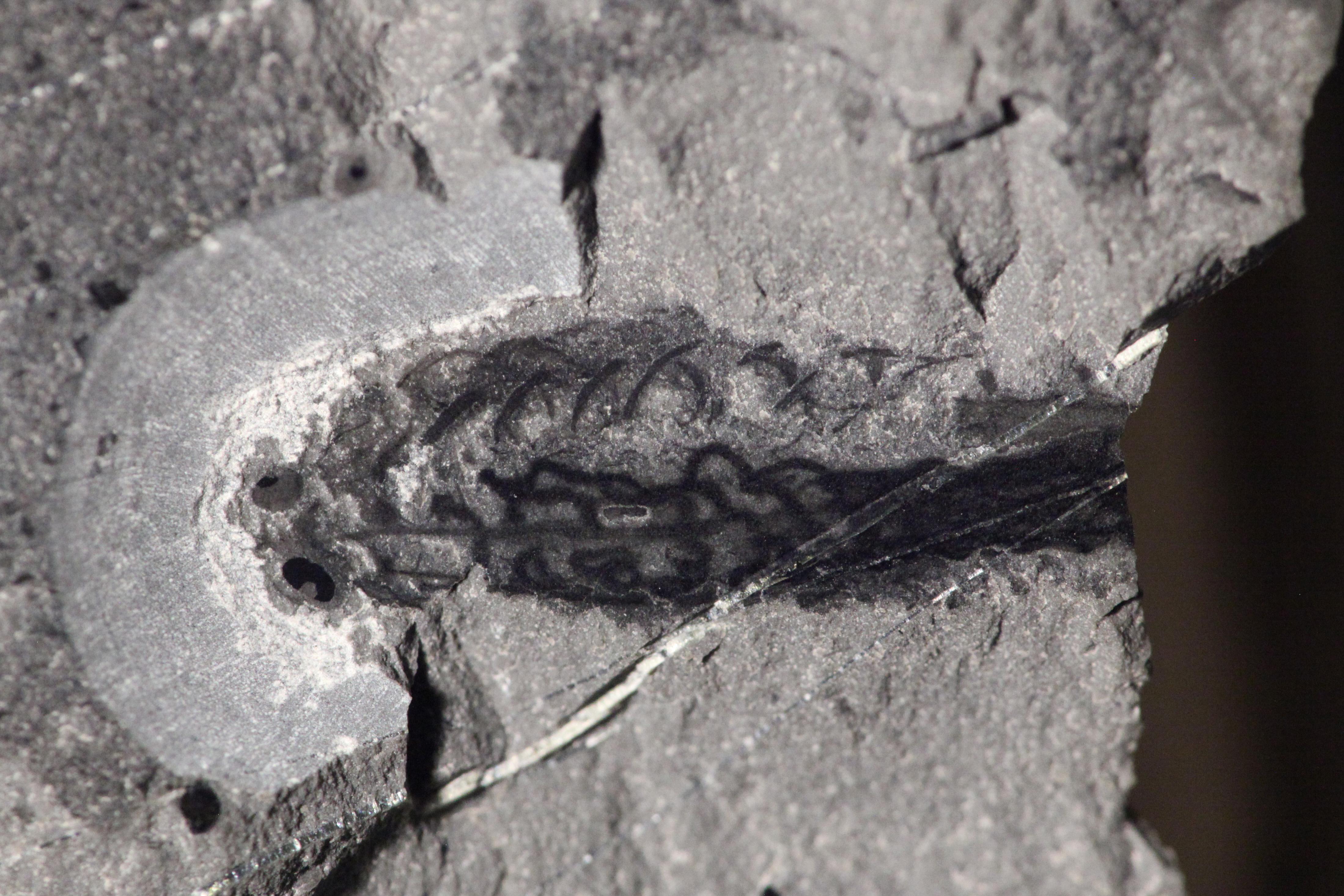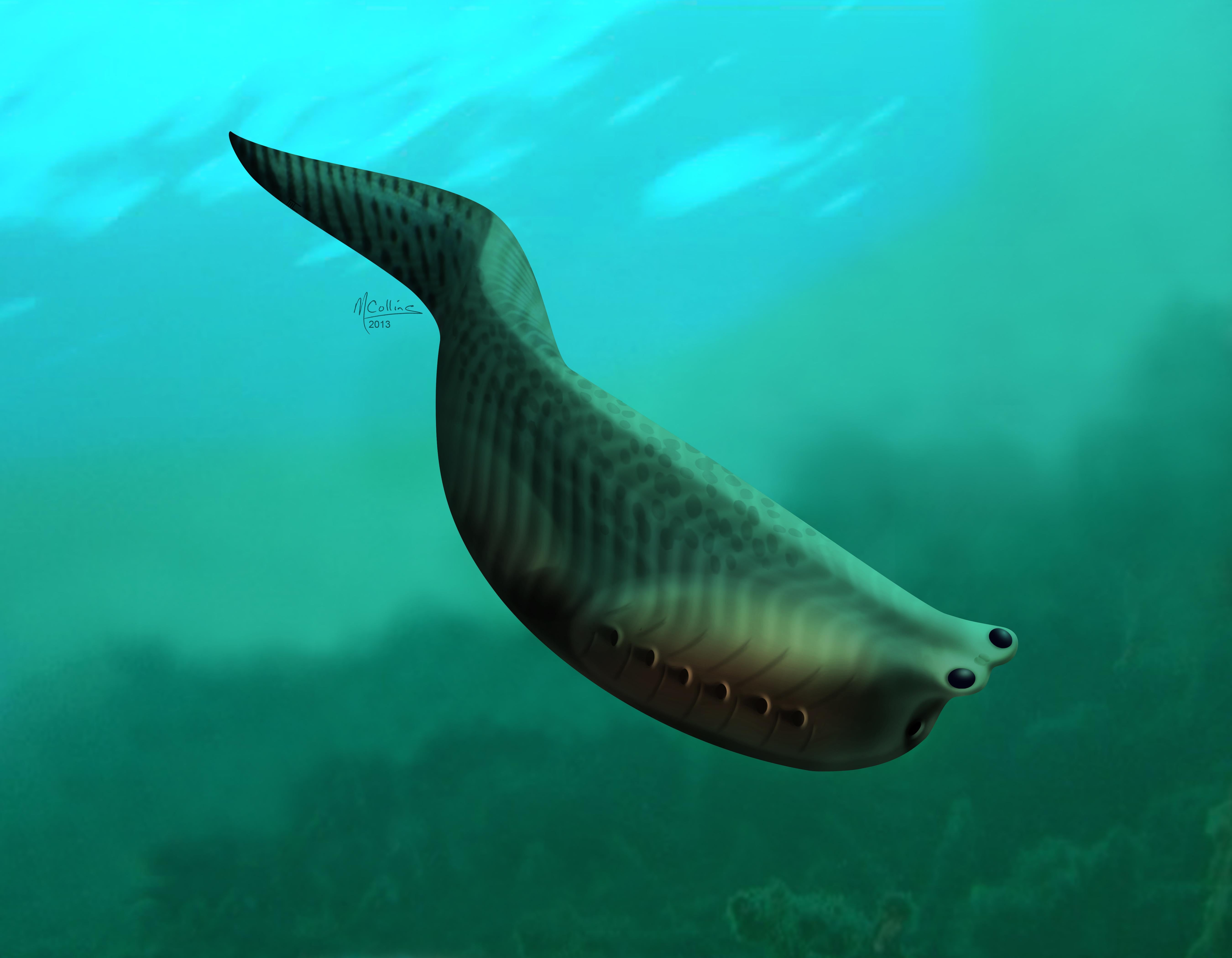Once upon a time, weird fish ruled the world. The oceans teemed with primitive vertebrates that lacked eyes, ears, and even fins. Fish ate by sucking up water and debris from the ocean floor, filtering out the goodies, and then releasing the rest through their gills. Once fish evolved jaws, they began to chomp on more complex plants and animals. Scientists announced today in Nature that Metaspriggina, a primitive fish that lived roughly 505 million years ago, played a key role in the origin of jaws.
Like other fish, Metaspriggina had bones called gill arches to support its gills. But while more primitive fish had seven individual gill arches, scientists found that Metaspriggina had seven pairs of gill arches. This fish did not have full-fledged jaws, but its gill arches, with paired separate bones rather than continuous single bones, were “a staging post in the evolutionary story of vertebrates,” says paleontologist Simon Conway Morris, the study’s lead author. Morris and his co-author, Jean-Bernard Caron, propose that the pair of gill arches closest to the head evolved into the upper and lower jaw bones.
Paleontologists have long predicted such a creature, but Metaspriggina is the first fossil evidence that supports the prediction. “Everyone said it should have existed, but it’s never been found,” Morris said. “It looks remarkably like the hypothetical animal that we’d talked about.”

Photo by Jean-Bernard Caron © ROM
Metaspriggina is the latest organism discovered near the Burgess Shale fossil field to enrich paleontology’s understanding of the evolution of life. Fossils from this area in the Canadian Rockies have helped scientists understand the Cambrian explosion, the period of time roughly 540 million years ago when life on Earth underwent rapid diversification.
Like many successful features found in nature, Metaspriggina’s pairs of gill arches did not necessarily evolve for the purpose of eating or chewing. Some scientists have proposed that jaws helped fish push more water—and thus, more oxygen—through their mouths and gills. Like feathers, jaw bones could have evolved for one purpose and then been co-opted for others.
Once in place, jaws would have allowed fish to eat a more diverse set of foods, but jaws may also have had less obvious effects on vertebrate evolution. A more diverse set of foods may have led to the development of more complex immune systems to guard against foreign diseases, for instance, and could have pushed the evolution of cognitive abilities as species engaged in more complex predator/prey interactions. But, most importantly for us humans, they allow us to do cool things like talk about fossils—so thanks for blazing the trail, Metaspriggina!
